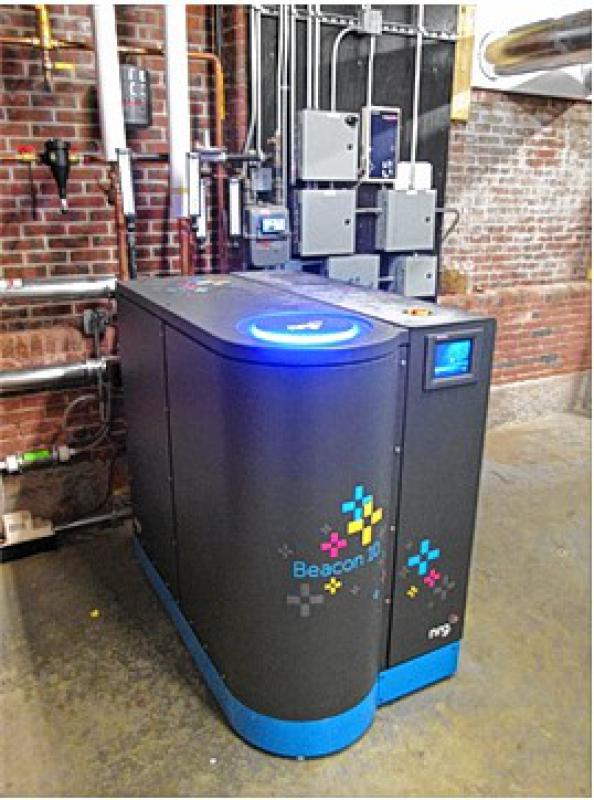Fans of Stirling engines (and they certainly exist – I get emails from one or two every month) will have to wait longer before this technology shows up in Concord: Nobody wants to provide one of these engines for a test of the technology in a state-owned building– not even the New Hampshire company whose offer got the proposal started in the first place.
When the state announced last spring that it was seeking bids for a Stirling engine to provide heat and power in the basement of the laundry room of the state hospital at 127 Pleasant St. in Concord, the obvious front-runner was Dean Kamen’s Manchester firm DEKA Research and Development,
Kamen has long been a fan of Sirling engines, an external-combustion motor that has frustrated most efforts to commercialize it over the past century.
DEKA makes and sells refrigerator-sized Stirling engines, and uses a few to help heat and power part of the Manchester Millyard.
But the time period passed with no bids coming forward, said Karen Rantamaki in the Energy Management section of the Department of Administrative Services.
DEKA spokesman Jim Scott said it turns out that the project didn’t fit the company’s needs at the moment.
“Unfortunately, we did not feel that it made sense to commit the required resources to the pilot installation at that time,” he said. “DEKA remains enthusiastic about distributed energy generation and looks forward to working with the state of New Hampshire on other mutually beneficial projects.”
DEKA got state government excited about Stirling engines two years ago when it offered to lend the state one of its 10-kilowatt engines, which burn natural gas to produce electricity and heat. Lawmakers were enthusiastic about the idea, partly because it would help New Hampshire sell itself as a high-tech hotbed, but concerns were raised about the legality of favoring a single company.
Instead, last April the state asked for companies to bid on its plan to put a Stirling engine in the laundry room of the state hospital, part of a transition from defunct Concord Steam to natural gas that is happening throughout the Hugh Gallen State Office Park.
Rantamaki said department remains open for solicitations of projects again if there is interest.
Under the RFP, the winning bidder had to install install a Stirling engine “for heat and/or electricity at the New Hampshire Hospital Laundry Facility at no cost to the state,” maintain and repair the machine for free, and remove it at any time if the government decides the project isn’t working, also at no cost to taxpayers. The project could run anywhere from one to five years and at the end of the time the site “shall be returned to its original condition or better.”
Stirling engines are named after Robert Stirling, a Scottish minister who developed one of the prototypes 200 years ago.
They use an external heat source to create energy and do work, rather than the internal heat source used by engines in cars. Also, they are closed-cycle devices, with fluids and gases staying inside, unlike the exhaust that is released by a car.
In theory, these factors make the Stirling engine more flexible than internal-combustion engines, since they can be fired by external heat source, and also less polluting. But issues of heat transfer through materials, sealing fluids and other engineering problems have kept Stirling engines out of all but a few limited applications.


 Return to the Concord Monitor
Return to the Concord Monitor
What about selling these outfitted for external combustion for use in the third world or in areas difficult for power transmission cables.
“they are closed-cycle devices, with fluids and gases staying inside, unlike the exhaust that is released by a car”.
This is very misleading. It’s like saying a transmission or an alternator is a emissions free engine, because they don’t emit gases.
They still need to have an external power source which in this case is propane. You can’t burn propane without emitting gases and fluids.
The Sterling engine is just converting one kind of energy to another.
The sterling engine runs off of steam at least the most basic of forms and doesnt take another gas or fluid other than water for it to work. not to push again what you were saying i hope this helps clear things up
How high will labor cost need to ride before we explore multi sight cogeneration utilizing natural gas